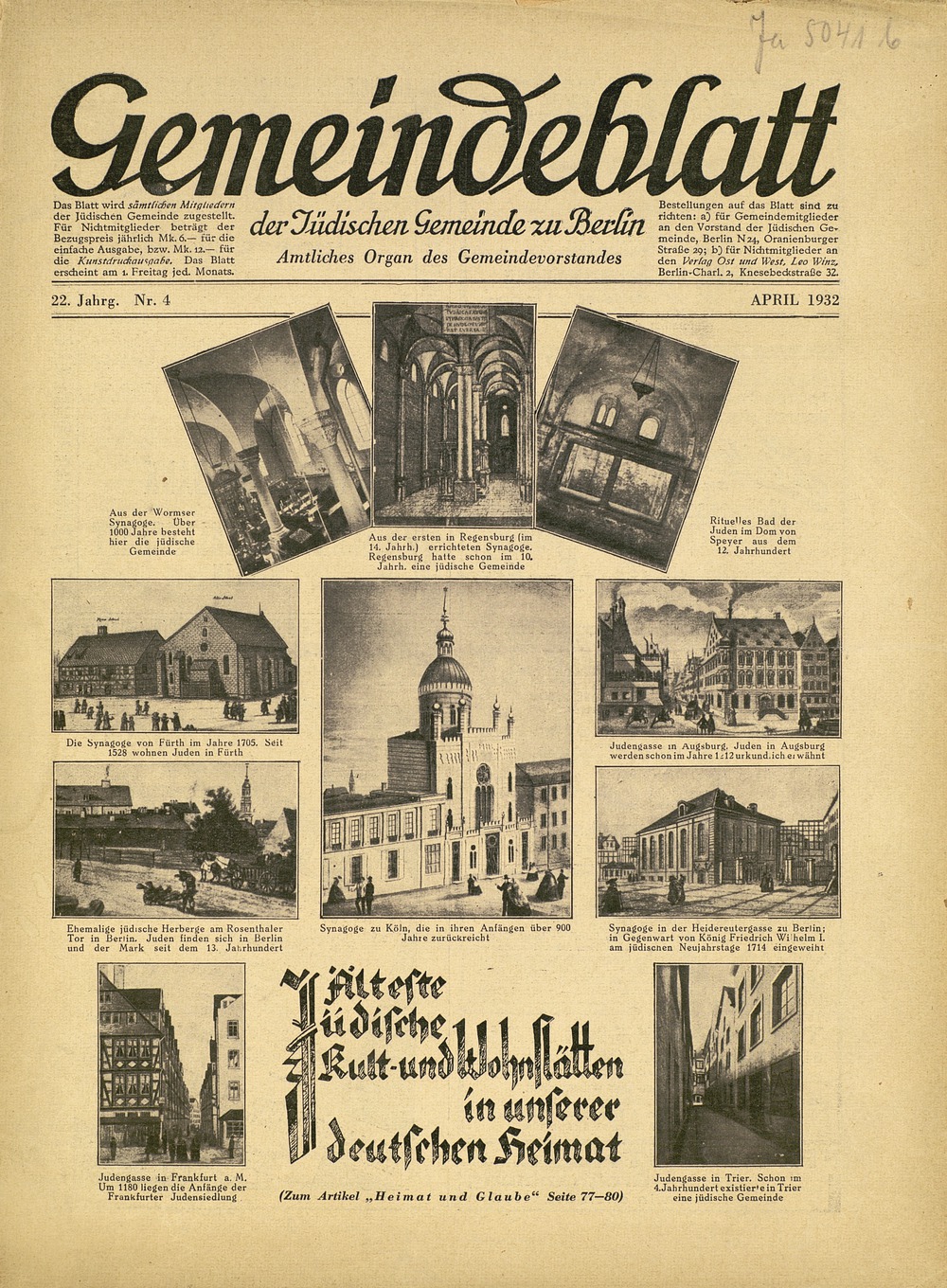




Gemeindeblatt der Judischen Gemeinde zu Berlin
(Trans. Community newsletter of the Jewish Community of Berlin)
1932
Vorstand der Judischen Gemeinde, Berlin
From the Isser and Rae Price Library of Judaica
The Berliner Gemeindeblatt (Berlin newsletter) was first published in 1910. Unlike the other 23 Gemeinde periodicals, which were more limited and localized, its circulation numbers reached 52,000 in 1925. The total highest circulation for these community journals was 110,000 copies in 1936. This copy of an issue from 1932, aside from its inherent historical value for reconstructing Jewish life in Germany, is interesting as it appears to have a signature of ownership next to an article on the Jewish Women's League. The article was written by Bertha Badt-Strauss, one of the first women to earn a doctoral degree in Prussia. Badt-Strauss was a prolific writer and published hundreds of articles during her lifetime. In Berlin, she wrote for Jewish publications such as the Jüdische Rundschau, the Israelitische Familienblatt, and Der Morgen, She participated in the German women’s movement and published in German newspapers and magazines. She was also deeply engaged with Jewish women's concerns. In this copy of a Badt-Strauss article, the name “Bertha Falkenberg” is signed next to the title. Falkenberg (1876-1946) was the President of the Jewish Women’s League in Berlin, one of the first elected Jewish women in the Jewish assembly and a long-time campaigner for Jewish women's right to vote as full synagogue members. She initiated the building of many other important community institutions, especially with the welfare of young women in mind. After 1933, she helped provide relief facilities, organized retraining and employment, and gave food assistance to families and individuals in distress. During the deportations, the sixty-four year old Bertha Falkenberg stood at railway centers helping to get food to the deportees. She was deported to Theresienstadt in August 1942. She survived the concentration camp but, weakened by the ordeal, died soon after in Switzerland without managing to see her children again.


